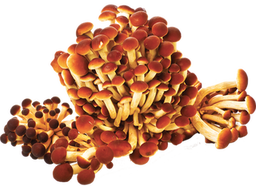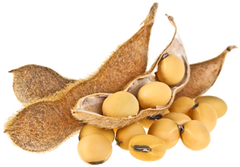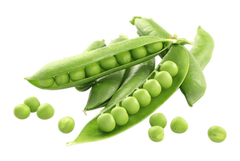




Panel discussion on...
Alternative proteins
Sandra Einerhand
Founder & Head, Einerhand Science and Innovation, The Netherlands

Member of AgroFOOD Industry Hi Tech's Scientific Advisory Board
The rise of alternative proteins
Exploring the potential of alternative proteins:
market developments, state-of-the-art production, and consumer acceptance
Commentary article
As the world continues to grapple with the challenges of food insecurity, environmental sustainability, and population growth there has been growing interest in sustainable production of alternative proteins. From plant-based proteins to lab-grown meat, the possibilities for new sources of protein seem endless. Alternative proteins can have a major impact on at least 5 of the United Nations’ Sustainable development goals: Zero hunger; Good health and Wellbeing; Responsible consumption and production; Climate Action; and Life on Land. While the concept of alternative proteins is not new, recent technological advances have led to exciting developments in this field.
The inputs received for this Panel discussion on Alternative Proteins have shed light on the market developments and state-of-the-art production of alternative proteins. Experts explored the various approaches, including plant-, insect-, fermentation-based proteins, and lab-grown milk and meat. Each approach presents unique opportunities and challenges.
Market developments and insights
The market for alternative proteins is expected to grow in the future (Euromonitor and FMCG Gurus). Consumer attitudes towards alternative protein are changing as more consumers actively try to reduce their meat and dairy intake, with plant-based and alternative protein products becoming increasingly popular (FMCG Gurus). Environmental concerns, health, and animal welfare are top reasons cited for not consuming meat as often, while plant-based dairy alternatives are seen as healthier for the environment and animal welfare. According to Euromonitor, the flexitarian consumer identity being the main driver behind the growth of the alternative protein market. Flexitarians are open to new sources of protein and constitute the majority of millennials and Gen Z consumers (Euromonitor).
Taste is the main factor in consumers' decisions, with sustainability claims following closely behind. The plant-based industry must address normalizing the market and place a higher focus on taste, nutrients, and affordability (FMCG Gurus). Alternative protein offers endless opportunity for development to enhance the nutrients, flavor, and texture of products, but it's important to consider consumers' apprehensions regarding the safety of their long- and short-term health and the wider environment. As current food habits and resources are unsustainable for the future, education and transparency to the source, formulation, and ingredients of alternative proteins are necessary to provide clarity and reassurance to consumers (FMCG Gurus).
The regulatory environment for alternative protein companies has been largely favorable for plant-based proteins, but more complex for cultivated proteins and precision fermentation. Given the long wait and high capital costs associated with approval processes, it is up to regulators to create proper definitions for production processes and provide subsidies to level the playing field for all players in this market (Euromonitor).
State-of-the-art production of alternative proteins
Plant-based proteins have gained a lot of traction in recent years, and for good reason (Roquette). Not only are plant-based proteins more sustainable than traditional animal-based proteins, but they are also healthier and better for the environment. Several companies have emerged as leaders in this field, including Beyond Meat, Impossible Foods, and Quorn. These companies are using innovative technologies to mimic the texture and taste of meat, without the environmental and ethical concerns associated with traditional meat production. However, bovine milk proteins still dominates the infant formula market because it is a high-quality protein source that meets strict nutritional standards for rapidly growing infants (K&L Gates). Companies wanting to introduce new plant proteins face regulatory hurdles to demonstrate their quality, which can be challenging when infant formula is assumed to be the sole source of nutrition in the first six months of life. In contrast, plant-based products are booming in adult nutrition because nutritional differences are not as impactful due to varied diets. Infant formula may require combinations of plant or alternative proteins ingredients in order to provide the required amino acids profile to adequately replace bovine milk proteins.
Insect-based proteins may seem unappetizing to some, but they are gaining acceptance in Western diets due to their high nutritional value, including high-quality proteins with essential amino acid profiles (Carlos Bugs). In addition, they have the potential to be a highly sustainable. Insect farming is far more efficient than traditional livestock farming, requiring far less land, water, and feed. Various insect ingredients have received Novel Food approval to be placed in the EU market, such as whole dried insect powder, defatted powder, whole, frozen, and paste insects. Insect-textured protein can be utilized in plant-based meats to improve meat-like texture. Consumer barriers to accepting alternative proteins include neophobia, unhealthy habits, cultural assumptions, and disgust of pests. Education and trust in product manufacturers and brands are essential to increase consumer acceptability. More significant opportunities, better nutrition knowledge, and awareness about edible insects can increase consumer acceptance. Companies like Entomo Farms are leading the way in this field, producing a range of insect-based products that are both nutritious and delicious.
Precision fermentation producing animal-free animal proteins is currently the least developed area of alternative protein sources (NIZO). It involves genetically modifying microorganisms to produce a protein with an amino acid sequence that is identical to a target animal protein. While this technique is widely used in the pharmaceutical industry, it is still a challenge to produce bulk ingredients for food that are cost-effective, functional and well-accepted by the consumer. One challenge is replicating post-translational modifications, such as phosphorylation, which affect the structure of proteins in dairy products like cheese and yoghurt. Micro-scale food application experiments, like those used in testing small amounts of proteins in dairy products, can help reduce scale-up risks and provide insight into critical aspects like taste and texture during the development process (NIZO). Consumers are more likely to try products made with precision fermentation if they knew that they were proven to be safe, high in nutritional value, low in price and good for the environment. Brands can further support awareness and interest in these offerings by being transparent and communicating more details about products created through these methods. One example of a successful company that markets proteins via precision fermentation is Perfect Day, a start-up based in Berkeley, California, USA. They produce a dairy-free, vegan "milk" using precision fermentation to create the same milk proteins found in cow's milk, without the use of any animals. The biggest challenge for Perfect Day is scaling up production to meet increasing demand for their product. The cost of precision fermentation technology and the need for a consistent, high-quality product also still present challenges.
Single cell - or microbial proteins are seen as a breakthrough alternative protein source due to their potential to ease pressure on agriculture systems and the environment, as they don’t require land or irrigation (NIZO, Sophie's BioNutrients, Lallemand). Microbial or single cell proteins are obtained through fermentation technology from microorganisms, bacteria, or yeast, that grow fast controlled conditions, allowing the obtention of a considerable quantity of protein in a fairly short time. Their production is also independent of the season, so its production is a lot more sustainable and efficient than the conventional animal farming or even agriculture. Life Cycle Assessment (LCA) studies have shown that yeast protein has low CO2 emissions and land requirements compared to other protein sources such as beef, pork, soy, pea, and fava protein (Lallemand).
Lab-grown meat, or cultured meat, has also garnered a lot of attention in recent years. This approach involves growing meat in a lab using stem cells taken from animals. While the technology is still in its early stages, it has the potential to revolutionize the meat industry by significantly reducing its environmental impact. Companies like Memphis Meats and Mosa Meat are leading the way in this field, producing lab-grown meat that is virtually indistinguishable from traditional meat. The novelty of the technology is what makes the regulatory pathway to market less clear in some countries, or the existing procedures not fully adapted (Lallemand). In the EU, cultivated animal proteins fall under the Novel Food regulation, although no product has been approved yet. Singapore was the first Agency to grant a regulatory approval to a cultured chicken product in 2022, which was a milestone in the cell-based sector. Other approvals have come since, such as a cultivated-chicken approval by the US FDA in 2022. Regulatory approvals are coming progressively and the pathway to market is more and more straightforward.

Challenges and Opportunities
Of course, there are challenges associated with each of these approaches. Plant-based proteins can be expensive to produce, insect-based proteins face issues of public perception, and lab-grown meat is still in the early stages of development. In addition, most of the cultured meats reported so far have a minced structure consisting only of muscle cells, making it difficult to reproduce a real steak or other complex structures. Furthermore, many alternative protein sources do not yet have the taste and texture that is comparable to traditional animal-based protein sources. However, with each passing day, new technologies, culinary creations and cooking methods are emerging that are helping to overcome these challenges. For instance, 3D-bioprinting is a new technology to create muscle tissue structures. This technology is expected to be utilized in the field of food, for production of cultured meat with controlled arrangement of muscle, fat, and blood vessels (Shimadzu). On the taste side, sous-chefs are pushing limits to increase consumer interest in alternative protein by optimizing flavor and the sensory experience through exceptional culinary creations and cooking methods (ADM).
The alternative protein industry also faces challenges related to regulations, safety, consumer acceptance, technology, and forgery (K&L gates). The regulatory pathway is a major obstacle to the commercialization of these products, as the governing framework differs across regions and determines the safety requirements. Although it is often neglected during the initial stages of research and development, understanding the regulatory landscape and the path to market is crucial for ensuring a successful product launch (Intertek). Enhancing the flavor and texture of alternative proteins is another challenge, but some companies are exploring different scaffolding technologies and 3D printing. Also the environmental impact of alternative proteins is coming under scrutiny and it is important to consider the sustainability and processing costs of different sources (NIZO). When comparing the impact of different alternative proteins, it is thus important to list the boundaries and assumptions used to calculate the environmental impact. Harmonization of labeling schemes, transparency and clear communication are key to addressing remaining consumer concerns about alternative proteins (Lallemand, K&L Gates). Taggants can be used in food products to combat the problem of counterfeit alternative proteins. Governments can foster innovation and promote the growth of the alternative protein market by taking a science-based approach to regulatory assessments (K&L Gates).
Despite the challenges, the potential benefits of sustainable production of alternative proteins are hard to ignore. Not only do these approaches promise to be more sustainable and healthier than traditional meat production, but they also have the potential to help address food insecurity around the world. Big efforts have been made to make plant-based food more affordable. Scale-up, efficiency in operations, formulation choices are significant drivers for more competitive alternative protein-based food, thus less a reason not to test and adopt them (Roquette). As the world's population continues to grow, it is becoming increasingly clear that alternative proteins are not just a fad, but a necessary part of our future.
New innovations are also beginning to fill alternative protein gaps in eating occasions. For example, whole muscle-like offerings, including steaks, chops and shellfish, are emerging. Cutting-edge technologies and solutions are expanding and revolutionizing how we produce alternative protein options, with expert scientists and chefs collaborating to develop applications that capture consumer attention. Alternative proteins can support dietary diversity, experiential eating and a more secure food system.
In summary, the recent series of inputs highlighting the exciting advancements in sustainable production of alternative proteins has shown that there is a lot of potential for this field. From plant-based proteins to lab-grown meat, the possibilities are endless. While there are still challenges to overcome, it is clear that sustainable production of alternative proteins is here to stay, and will play a crucial role in shaping the future of food production.





References and notes
- Arenas-Jal M, Suñé-Negre JM, Pérez-Lozano P, García-Montoya E. Trends in the food and sports nutrition industry: A review. Critical Reviews in Food Science and Nutrition. 2020;60(14):2405-21.
- Angus A. Top 10 Global Consumer Trends for 2018: Emerging Forces Shaping Consumer Behaviour: Euromonitor International; 2018 (Available from: https://tourismaccommodation.com.au/wp-content/uploads/2018/03/Top10-Global-consumer-trends-for2018.pdf.
- Labrecque LavdE, Jonas and Mathwick, Charla and Novak, Thomas and Hofacker, Charles. Consumer Power: Evolution in the Digital Age. Journal of Interactive Marketing 2013;27.
- Dunford M. Fundamentals of Sport and Exercise Nutrition 2010.
- Galaz GA. Chapter 20 - An Overview on the History of Sports Nutrition Beverages. In: Bagchi D, Nair S, Sen CK, editors. Nutrition and Enhanced Sports Performance. San Diego: Academic Press; 2013. p. 205-10.
- Bird SP. Creatine supplementation and exercise performance: a brief review. J Sports Sci Med. 2003;2(4):123-32.
- Schofield L. Vitamin Retailer The Dietary Supplement Industry Leading Magazine 2022 (Available from: https://vitaminretailer.com/activating-your-fitness-nutrition-department/.
- Newman JI, Xue H, Watanabe NM, Yan G, McLeod CM. Gaming Gone Viral: An Analysis of the Emerging Esports Narrative Economy. Communication & Sport. 2020:2167479520961036.
- Tartar JL, Kalman D, Hewlings S. A Prospective Study Evaluating the Effects of a Nutritional Supplement Intervention on Cognition, Mood States, and Mental Performance in Video Gamers. Nutrients. 2019;11(10).
